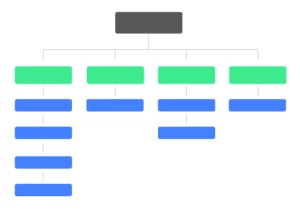I was at a digital marketing conference last week and one of the most popular phrases thrown around was “Best Practices”. In the area of digital marketing, the term “best practices” has long been used as a benchmark for “what you should do to your website” to improve user experience and conversion. It implies a set of proven and universally applicable methods that you can count on to work.
However, after over 15 years in CRO, it’s become abundantly clear that the notion of “Best Practices” is a false mirage, that, if relied upon, misses huge opportunities. The problem with “Best Practices” is that it takes on a one-size-fits-all approach, and if you’ve been in marketing for any reasonable length of time, you’ll recognize that businesses, their services and products and the customers they serve are anything but identical. What may hit a home run on one site, may strike-out on a site of a company even in a similar industry.
Instead, we should embrace the concept of heuristics, which are practical rules or guidelines that draw upon past experiences, intuition, pattern recognition, and general rules of thumb to guide our marketing decision-making processes. Heuristics allow for flexibility, adaptability, and critical thinking and release us from the limitations of “best practices”.
Here are just a few issues with adhering to a “Best Practices” mentality:
-
Misleading interpretation: The term “Best” implies there is nothing better. The best practices we hear in relation to CRO are certainly “Good Practices” to serve as a potential starting point, but in most cases can be improved upon based on each individual situation.
-
Contextual Variability: Every situation and problem is unique, influenced by a variety of factors such as organizational goals, branding, promotion, industry dynamics, and users goals. “Best practices” fail to account for this contextual variability, assuming instead that a single approach can guarantee success regardless of the differences.
-
Outmoded thinking: “Best practices” often arise from historical successes from a global perspective. However, they can quickly become outdated as industries, businesses and online user behavior evolve.
-
Lack of Flexibility: Blindly following generally accepted methods under the guise of the term “Best”, can lead to the risk of overlooking unique insights that may be key factors.
Heuristics, on the other hand, by providing guiding principles, allow for flexibility and creativity enabling marketers to devise unique and appropriate solutions based on qualitative and quantitative research. As such, they also promote a culture of continuous learning, critical thinking and ultimately better solutions to user experience and conversion.
Although some may argue that the difference between “Best Practices” and heuristics is just one of semantics, based on what we see and hear in our industry, we disagree. A true mind-shift away from the notion of a “given set of things you should do to your website” to one of acknowledging useful guidelines in combination with the understanding of the uniqueness of each situation through qualitative and quantitative research will likely lead to much improved and sustainable increases in user experience and conversion.



